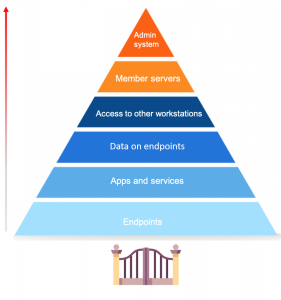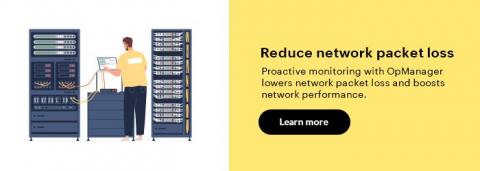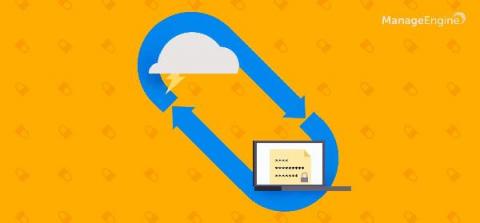Operations | Monitoring | ITSM | DevOps | Cloud
ManageEngine
Fine-tune network uptime monitoring with OpManager
Uptime monitoring has a direct impact on your organization’s ability to support end-users and deliver services. Not maintaining adequate uptime can interfere with business productivity and impact end-user satisfaction, eventually resulting in financial losses. Establishing uptime can be a challenging task since there are numerous factors that can act against it.
The role of endpoints in the security of your network
Endpoint security is a hot topic of discussion, especially now with so many businesses shifting to remote work. First, let’s define what endpoints are. Endpoints are end-user devices like desktops, laptops, and mobile devices. They serve as points of access to an enterprise network and create points of entry that function as gateways for malicious actors. Since end-user workstations make up a huge portion of endpoints, we’ll be focusing on their security.
OpManager makes network monitoring easy for Heritage Credit Union
About Heritage Credit Union Heritage Credit Union Limited is a US-based, non-profit financial institution founded in 1934. Today, it serves more than 28,000 members in Illinois and Wisconsin, with $450 million in assets and more than 120 employees. It takes care of its customers’ credit cards, banking, auto loans, mortgages, and savings accounts.
The Colonial Pipeline ransomware attack: Lessons for cybersecurity teams
The recent ransomware attack on Colonial Pipeline is reportedly one of the most significant cyberattacks on the energy sector till date, and it has overwhelmed cybersecurity experts across the globe.
Top 5 causes of network packet loss and how to resolve them with OpManager
Network packets contain pieces of information that are sent and received enabling communication. When these network packets fail to reach their destination, it results in network packet loss. Network packet loss causes heavy latency and disruption, so, when a network suffers packet loss, it can lead to undesirable circumstances, and organizations might even end up losing business.
Five worthy reads: Confidential computing - The way forward in cloud security
Five worthy reads is a regular column on five noteworthy items we’ve discovered while researching trending and timeless topics. In light of rising concerns over cloud cybersecurity, this week we explore the concept of confidential computing. The past year has seen strong adoption of cloud technologies due to accelerated digital transformation and a cloud-first approach in business.
5 key challenges in CPU temperature monitoring and how to overcome them
Fluctuations in CPU temperature contribute to a considerable amount of network downtime and lead to network performance deterioration. When the CPU gets overheated, network devices slow down or even shut off; it also affects the performance of other network devices and causes an unpleasant user experience. CPU over utilization is not only a problem in itself but is also an indication of several other issues.
Monitor Azure using Applications Manager
Microsoft Azure is the fastest growing cloud platform at the moment. Many organizations use Microsoft Azure to quickly build and deliver cloud services that can scale or to migrate existing workloads to the cloud. However, larger and faster cloud services can quickly increase the complexity of a network. To solve this and ensure business-critical workloads run correctly, IT teams need deep visibility into their Azure environments.
Multi-client network troubleshooting is now hassle-free with ServiceDesk Plus MSP integration
Managed service providers (MSPs) typically might run into a variety of network issues in a client’s network, and they address them without compromising the performance of other client networks. This requires visibility into multi-client networks, and good sense in decision-making. When it comes to multi-client network monitoring and management, proactively troubleshooting network issues may seem trivial, but they are not.











